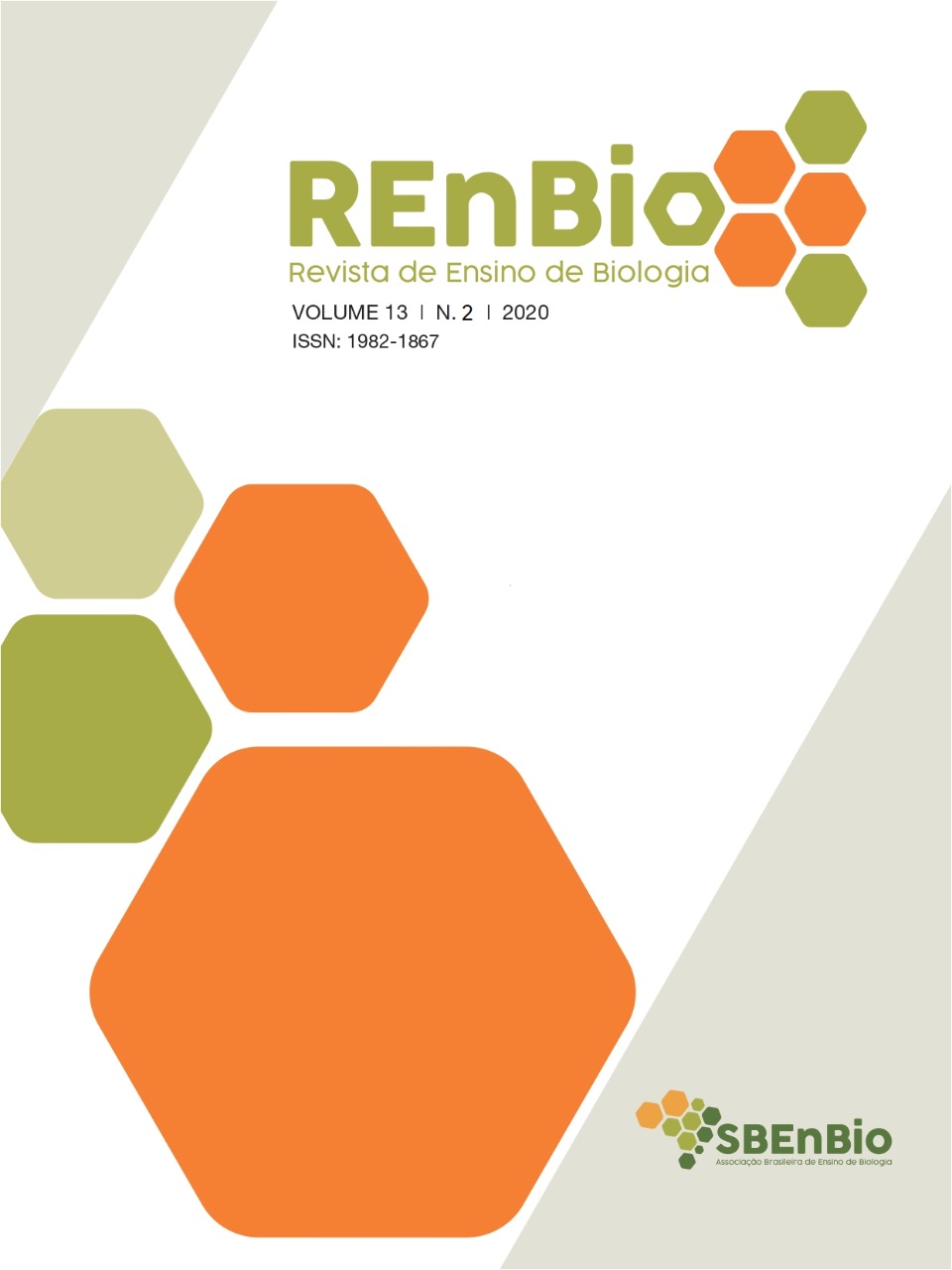Use of augmented reality software as a pedagogical tool Virtuali Tee app presentation
Main Article Content
Abstract
The use of technologies in education is becoming increasingly frequent and important in the modern society. In this context, the present work seeks to present to students of the eighth year of elementary school, aged between 14 and 15 years, the possibilities of applying augmented reality software that allows students to visualize and interact with some systems of the human body, thus favoring the learning process. To do so, students downloaded a software in their smartphones, the Virtuali tee, that works in conjunction with a specific tee that allows the user to virtually contact the human body and some of its organs and systems in an interactive and dynamic way.
Downloads
Article Details

This work is licensed under a Creative Commons Attribution-NonCommercial-NoDerivatives 4.0 International License.
Aviso de Direito Autoral Creative Commons
 https://creativecommons.org/licenses/by-nc-nd/4.0/
https://creativecommons.org/licenses/by-nc-nd/4.0/
Autores que publicam nesta revista concordam com os seguintes termos:
- Autores mantém os direitos autorais e concedem à revista o direito de primeira publicação, com o trabalho simultaneamente licenciado sob a Licença Creative Commons Attribution que permite o compartilhamento do trabalho com reconhecimento da autoria e publicação inicial nesta revista.
- Autores têm autorização para assumir contratos adicionais separadamente, para distribuição não-exclusiva da versão do trabalho publicada nesta revista (ex.: publicar em repositório institucional ou como capítulo de livro), com reconhecimento de autoria e publicação inicial nesta revista.
- Autores têm permissão e são estimulados a publicar e distribuir seu trabalho online (ex.: em repositórios institucionais ou na sua página pessoal) a qualquer ponto antes ou durante o processo editorial, já que isso pode gerar alterações produtivas, bem como aumentar o impacto e a citação do trabalho publicado (Veja O Efeito do Acesso Livre).
References
ALMEIDA, M. E. B. Tecnologia na escola: criação de redes de conhecimento. In: ALMEIDA, M. E. B.; MORAN, J. M. (Org.) Integração das tecnologias educacionais. Brasília, DF: MEC/SEED, 2005.
ALMEIDA, M. E. B. Apresentação. In: BACICH, L.; MORAN, J. M. (Org.). Metodologias ativas para uma educação inovadora: uma abordagem teórico-prática. Porto Alegre: Penso, 2018.
AZUMA, R. et al. Recent advances in augmented reality. IEEE Comput. Graph. Appl., v. 21, n. 6, p. 34-47, Nov./Dec. 2001. Disponível em: doi: 10.1109/38.963459.
BARRETO, R. G. Tecnologia e educação: trabalho e formação docente. Educ. Soc., Campinas, v. 25, n. 89, p. 1181-1201, set./dez. 2004.
BRASIL. Base Nacional Comum Curricular. Brasília, DF: MEC/SEF, 2018. Disponível em: http://basenacionalcomum.mec.gov.br/
BRASIL. Parâmetros Curriculares Nacionais. Introdução. Ensino fundamental. Brasília, DF: MEC/SEF, 1998. Disponível em: http://portal.mec.gov.br/seb/arquivos/pdf/introducao.pdf
CARVALHO, J. M. J.; LIAO, T. Realidade aumentada e interdisciplinaridade: o uso do aplicativo LandscapeAR no Ensino de Matemática e Geografia. EaD em Foco, v.10, n.2, e1049.2020. Disponível em: https://eademfoco.cecierj.edu.br/index.php/Revista/article/view/1049/544
CURIOSCOPE. Virtuali tee. [s.d.] Disponível em: https://www.curiscope.com. Acesso em: agosto 2019.
DELORS, J. (Org.). Educação: um tesouro a descobrir. Relatório para a UNESCO da Comissão Internacional sobre Educação para o século XXI. São Paulo: Cortez, 1998.
FARIA, E. T. O professor e as novas tecnologias. In: ENRICONE, D. (Org.). Ser professor. 4 ed. Porto Alegre: EDIPUCRS, 2014, p. 57-72.
KENSKI, V. M. A formação do professor-pesquisador: experiências do grupo de pesquisa “Memória, Ensino e Novas Tecnologias (MENT)” In: FAZENDA, I.C.A. (Org.). Didática e interdisciplinaridade. São Paulo: Papirus, 2008. p.133146.
KENSKI, V. M. Educação e tecnologias: um novo ritmo da informação. 8. ed. Campinas: Papirus, 2012. p. 15-25.
KIRNER, C. Realidade virtual e aumentada, 2011. Disponível em: http://www.realidadevirtual.com.br
KIRNER, C., TORI, R. Fundamentos de realidade aumentada. In: TORI , Romero; KIRNER, Claudio; SISCOUTO, Robson. (Org.). Fundamentos e tecnologia de realidade virtual e aumentada. Porto Alegre: Sociedade Brasileira de Computação - SBC, 2006. v.1, p. 22-38.
KIRNER, C.; SISCOUTTO, R. Realidade virtual e aumentada: conceitos, projetos e aplicações. livro do pré-simpósio. SYMPOSIUM ON VIRTUAL AND AUGMENTED REALITY, 9., Petrópolis, RJ, 2007.
LEITE, B. Aplicativos de realidade virtual e realidade aumentada para o ensino de química. Revista de Estudos e Pesquisas sobre Ensino Tecnológico, v.6, 2020, e097220.
MORAN, J. M.; MASETTO; M.T.; BEHRENS, M. A. Novas tecnologias e mediação pedagógica. Campinas, SP: Papirus, 2013.
PEDROSA, S. M. P. A., ZAPPALA-GUIMARÃES, M. A. Realidade virtual e realidade aumentada: refletindo sobre usos e benefícios na educação. Revista Educação e Cultura Contemporânea, v. 16, n. 43, 2019.

